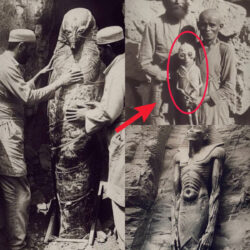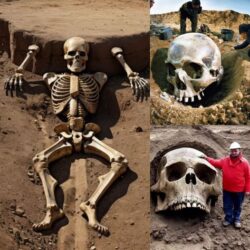
With the help of the locations and artifacts they find, archaeologists piece together history. A straightforward relic like a stone tool can reveal enough about how early humans lived. Archaeologists occasionally make grisly finds, forcing us to confront mortality and human evils. Here are seven of the spookiest archeological finds.
1. Screaming Mummy

Gaston Maspero, the head of the Egyptian Antiquities Service, opened a mummy known as Man “E” in 1886. Man E was discovered in a basic coffin that was covered with sheepskin. Maspero was horrified to see that the mummy’s wrists and feet were tied. The most shocking part was that the face was frozen in a way that made it look like the mummy was screaming.
Man E may have been poisoned or buried alive, according to the experts, given the manner his face and body were contracted. Whatever the cause, the man’s death was undoubtedly painful. He still had all of his internal organs and was not mummified in the conventional sense. Maspero proposed the hypothesis that Prince Pentewere, the son of Ramesses III, might be the mummy. Pentewere and his mother Tiy participated in a plot to kill their father. The plotters were apprehended and probably put to death. Regardless of who this mummy is, everyone in the globe is fascinated by his eerie face expression.
2. Bog Bodies

Bod corpses are dead people who have been preserved in European peat bogs. They are notable because the body is preserved so effectively by the peat. The peculiar characteristics of the peat bogs help preserve the skin, hair, and internal organs of many of the bog bodies that have been found, making them still look remarkably lifelike. The preservation of their visage makes many fascinating and a little spooky. The Koelbjerg Man, the earliest bog body yet discovered, was discovered in Denmark and dates to roughly 8000 BCE.
The Tollund Man is one of the most well-known and intriguing bog bodies. In 1950, he was found with a rope around his neck, laying on his side. Scientists think he was hanged based on the injuries to his neck. It’s also plausible that he was sacrificed rather than killed because of how carefully he was buried in the bog. Tollund Man has a serene expression on his face that almost resembles slumber.

The Grauballe Man, who lived between 400 and 200 BCE, did not appear to be as at peace. Before being dropped into the swamp, his throat was cut and his leg fractured. His body is contorted, and his expression is tight. Although it is likely that he was sacrificed as well, along with the others, it is still unknown why these guys may have been picked as potential sacrifice victims.
3. Otzi the Iceman

German hikers unintentionally came across Otzi the Iceman in 1991 as the ice surrounding his body started to thaw. In the Otzal Alps near the Austrian-Italian border, his remains had been preserved by ice and snow for roughly 5,300 years. His clothing and weapons were found next to his body. Otzi is a miracle of archaeology because of how well the corpse, clothes, and weaponry were kept.
There are several unsettling features, though, such how the body froze with the left stiff arm crossed over the body. Otzi the Iceman is thought to have been a murder victim. Archaeologists initially believed that he had passed away in an accident or through exposure to the weather. Otzi was found to have an entry wound on his back and an arrowhead in his left shoulder in 2001 after an X-ray examination. According to many who studied Otzi, this wound would have rapidly killed him. A serious head wound was also discovered. He had a wound on his hand, which suggested that he had been in a struggle just before he passed away. There appears to be no doubt that Otzi was murdered, but the reasons for his death remain a mystery.
It is also believed there was an Otzi “curse” that affected a number of people who were involved in the discovery of his body.
4. Poland Vampire Burials
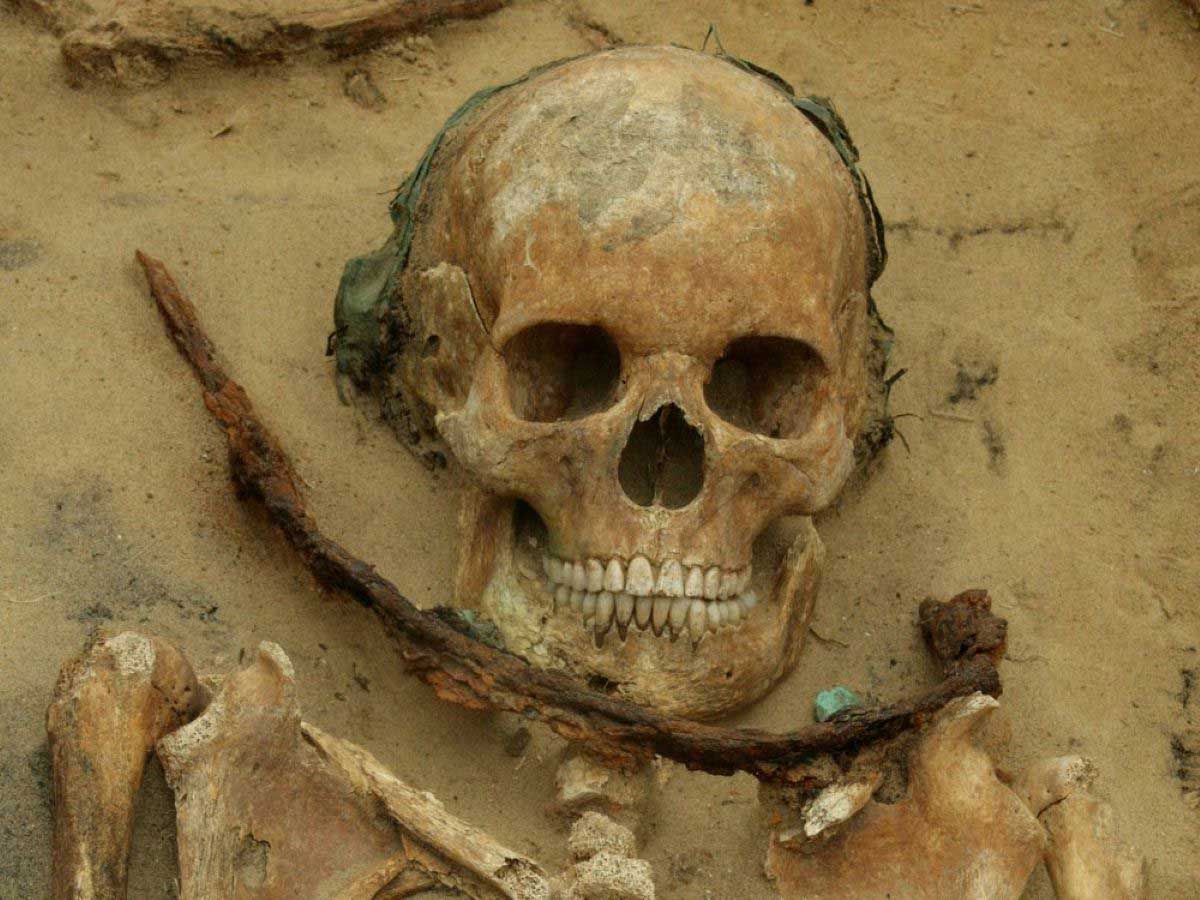
Archaeologists have discovered numerous instances of “vampire” burials during the past ten years in a number of Slavic nations. These burials involved people who were thought to be vampires and were interred in ways that would prevent them from coming back to life.
In 2013, burials were found when a new road was being built close to the Polish town of Gliwice. The bodies of the dead were beheaded, and their heads were interred between their feet. It was thought that decapitation prevented the dead from rising from their graves.
Other later excavated graves displayed other strategies for preventing the reanimation of the dead. For instance, a sickle was placed over the pelvis of a lady skeleton when she was interred. Other skeletons were discovered buried with sickles over their throats, ensuring that if they came back to life, they would be beheaded. Other types of interment discovered include placing a brick in the mouth or burying the deceased upside down. It makes me anxious to see how violently these people were buried.
5. Shackled Skeletons
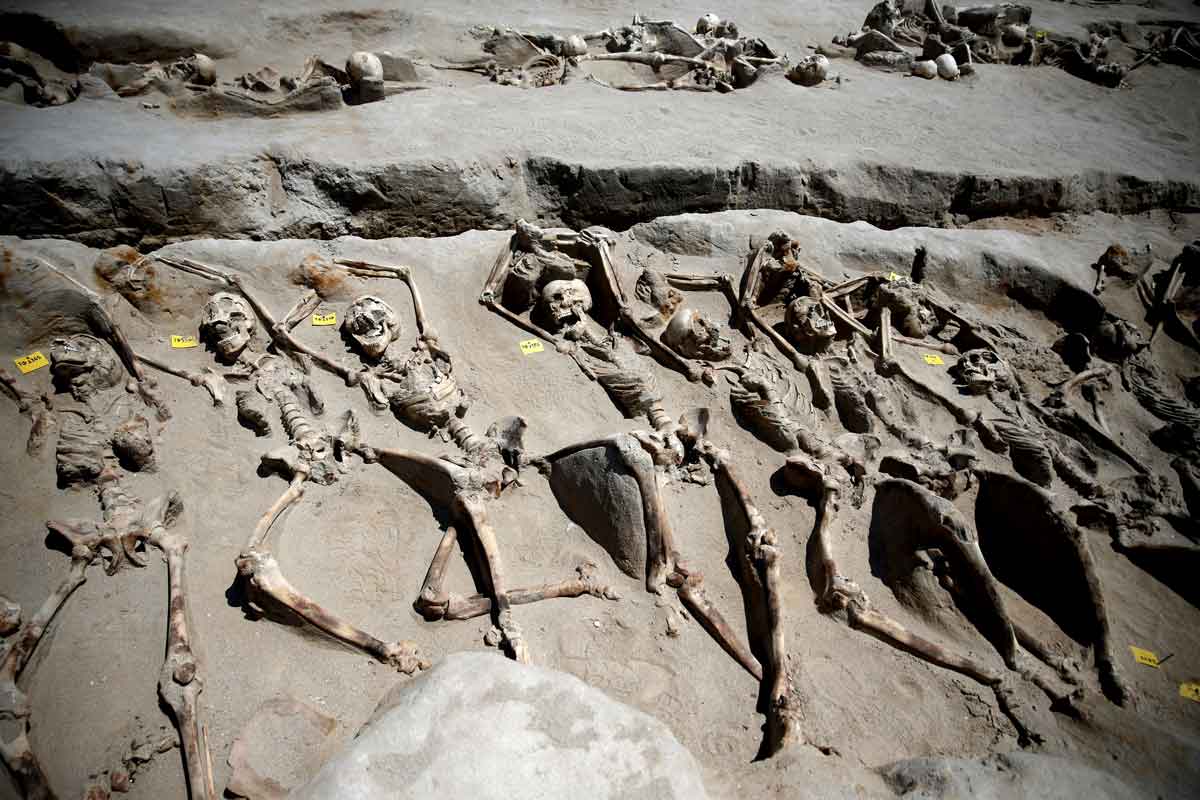
At least 80 chained skeletons were uncovered in 2016 in the Greek suburb of Palaio Faliro. The sight of the skeletons is unsettling. Many of them are lying with their mouths wide as if they were screaming when they passed away, and their hands are bound. The young men’s skeletons belonged to them, and they appeared to be in good health.
These guys may have been adherents of Cylon, a noble and Olympic champion who made an effort to conquer Athens in the seventh century BCE, according to archaeologists. The Cylon Affair was the name given to this infamous incident. Following the failure of Cylon’s attempt, his supporters sought refuge in the Acropolis’ temple to Athena. Thucydides claims that the followers were murdered immediately after leaving the temple. Archaeologists were able to date the burials to the time of the coup thanks to pottery discovered at the site. The skeletons might have belonged to slaves or criminals, nevertheless. However, authorities contend that the dignified manner in which they were buried implies otherwise. Whoever these individuals may have been, it is certain that they were the victims of a brutal mass execution.
6. Neanderthal Cannibalism

Neanderthals engaged in cannibalism, according to evidence found in a cave in Goyet, Belgium. The cave included bones that had been killed, had their marrow removed, and had been fashioned into tools. Cannibalism has also been found at Neanderthal sites in other nations. It is unclear why some Neanderthal tribes may have started eating one another, albeit such proof is not present at every location.
The human remains discovered in the Goyet cave belonged to four adults and one child. Similar-cut bones that were discovered belonged to killed animals. Experts are still unsure of the circumstances that led some Neanderthal societies to practice cannibalism. Although there is no evidence at the Goyet site to support this, malnutrition may have been the culprit. The possibility of this activity having a religious component has also been raised. Whatever the case, it is nearly impossible to determine for sure, but what is alarming is the fact that our distant ancestors occasionally ate one another.
7. Aztec Skull Rack and Towers

Numerous human skulls have been found in Aztec temples, which is not surprising given that the Aztec practice of human sacrifice is well-known. Outside the Templo Mayor in Tenochtitlan, a huge tzompantli, or skull rack, could be seen. The skulls weren’t just for show; they were also meant to be symbolic of the hereafter. Archaeologists found two towers surrounding the skull wall in 2015. Additionally, the towers were constructed completely of human skulls. The rack and walls, according to archaeologists at the National Institute of Anthropology and History, must hold thousands of skulls, demonstrating the enormous scale of the human sacrifice that was being performed.
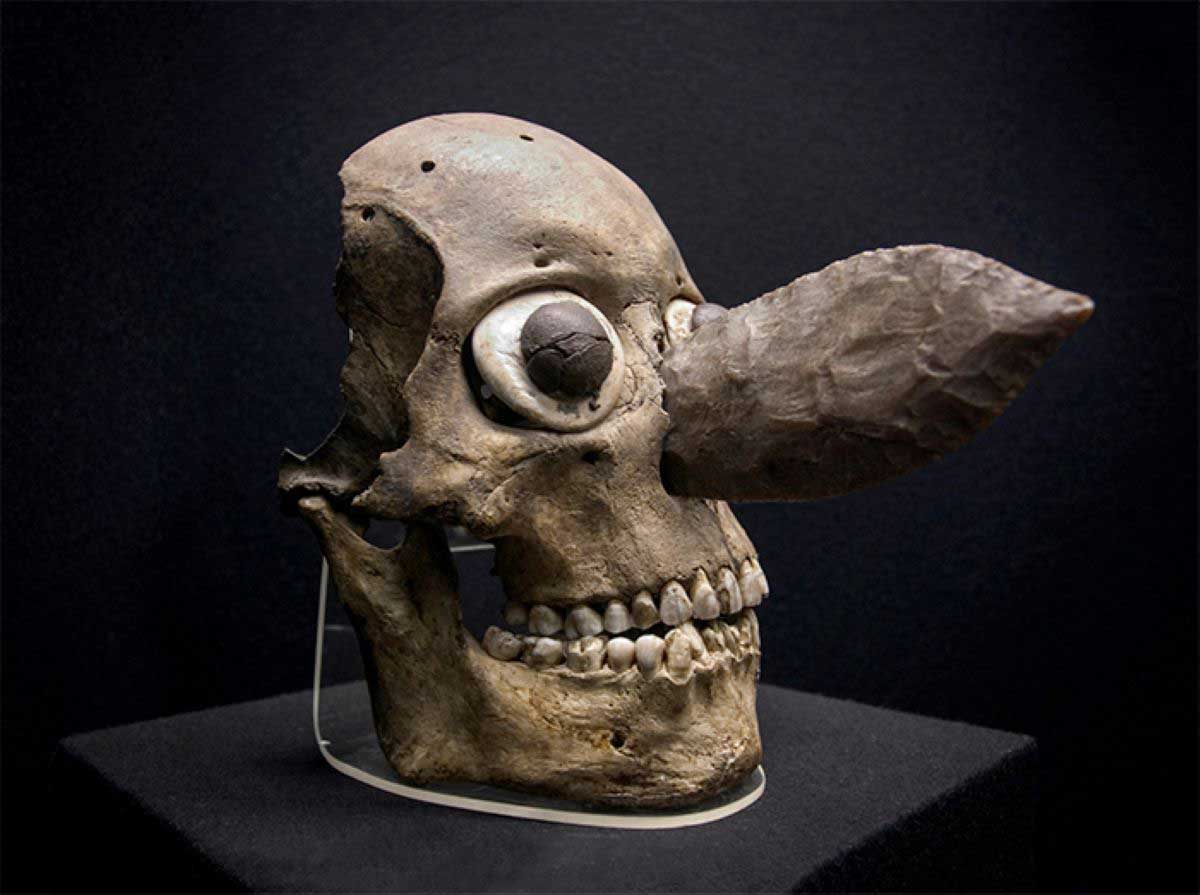
These skulls probably belonged to opposing fighters and sacrificed victims. The skulls would be transported to the towers as they started to decay on the rack, according to archaeological theory. When the Spanish came in the city, they were shocked and wrote about the tzompantli. Looking up at the enormous temple, one can only imagine how terrible the skull rack and towers must have been.




